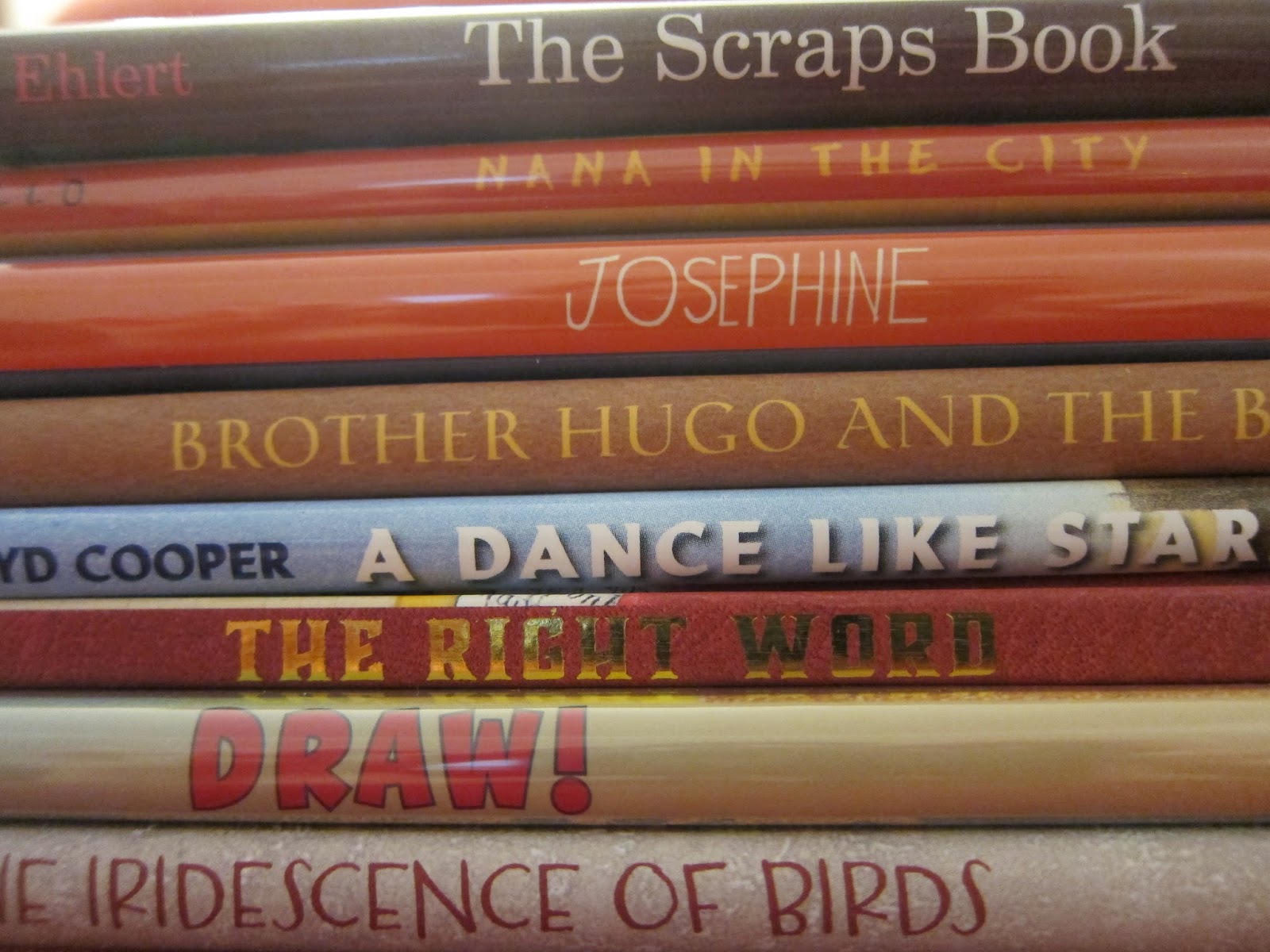


 A Home for Mr. Emerson. Haven't you ever wanted to just dive into a book? In this biography of Ralph Waldo Emerson, which centers on his home, the illustrator shows Emerson doing just that. I love everything about this book - the text, the illustrations, and how they work together. The oversized books which appear everywhere drive home the point that Emerson's home is not just the building he lives in, but the ideas, words and books he surrounds himself with, not to mention the nearby woods, and, most of all, a caring community of neighbors. The use of different fonts for the text and for direct quotes from Emerson himself works especially well. And despite the illustrator's very British-sounding name (Edwin Fotheringham), he is, indeed, a U.S. resident, making this book Caldecott-eligible. There's a great interview with him here.
A Home for Mr. Emerson. Haven't you ever wanted to just dive into a book? In this biography of Ralph Waldo Emerson, which centers on his home, the illustrator shows Emerson doing just that. I love everything about this book - the text, the illustrations, and how they work together. The oversized books which appear everywhere drive home the point that Emerson's home is not just the building he lives in, but the ideas, words and books he surrounds himself with, not to mention the nearby woods, and, most of all, a caring community of neighbors. The use of different fonts for the text and for direct quotes from Emerson himself works especially well. And despite the illustrator's very British-sounding name (Edwin Fotheringham), he is, indeed, a U.S. resident, making this book Caldecott-eligible. There's a great interview with him here. 
 Mr. Ferris and His Wheel. The color palette of vivid blues, golds, chartreuses and purples bring to life a world recently lit up by electricity. Together the text and the illustrations also convey the excitement associated with all sorts of new technology, embodied by the World Fair, and all kinds of races to build the next biggest and/or best thing.
Mr. Ferris and His Wheel. The color palette of vivid blues, golds, chartreuses and purples bring to life a world recently lit up by electricity. Together the text and the illustrations also convey the excitement associated with all sorts of new technology, embodied by the World Fair, and all kinds of races to build the next biggest and/or best thing.Of course, since there are no nominations for the real Caldecott, no short list, these two ARE contenders.














